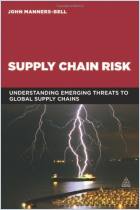Únase a getAbstract para acceder al resumen.

Únase a getAbstract para acceder al resumen.
Andrew R. Thomas
Supply Chain Security
International Practices and Innovations in Moving Goods Safely and Efficiently
Praeger, 2010
¿De qué se trata?
Due to theft and fraud, 15% of goods shipped globally do not reach their destination. Does your firm have a defense?
Recommendation
Everyone talks about globalization, but almost no one ever discusses the gritty details about how goods actually move around the world. This two-volume set changes that situation with 24 comprehensive essays on international best practices in supply chain security. The first volume deals with “The Context of Global Supply Chain Security,” and the second volume covers “Emerging Issues in Supply Chain Security.” These collections of thorough, practical, well-written articles by leading experts in security, crime prevention and logistics cover a range of issues and detailed information from legal exposure and risk assessment to supply chain management. They include specific precautions for those involved in transporting goods worldwide by air, road, rail and sea. These essays are focused, revealing and fully documented with citations and bibliographies. While some chapters are redundant and technical, this is a worthwhile, unusual and timely package of deeply informative books. getAbstract highly recommends it to global supply chain managers, shipping industry practitioners and their clients, and anyone concerned about the compounding, disruptive effects of terrorism and crime on a global economy. (And if you’re a terrorist or an international cargo thief, just forget these inside prevention tips, OK?)
Summary
About the Author
Andrew R. Thomas is Assistant Professor of Marketing and International Business at the University of Akron, Ohio.


















Comment on this summary